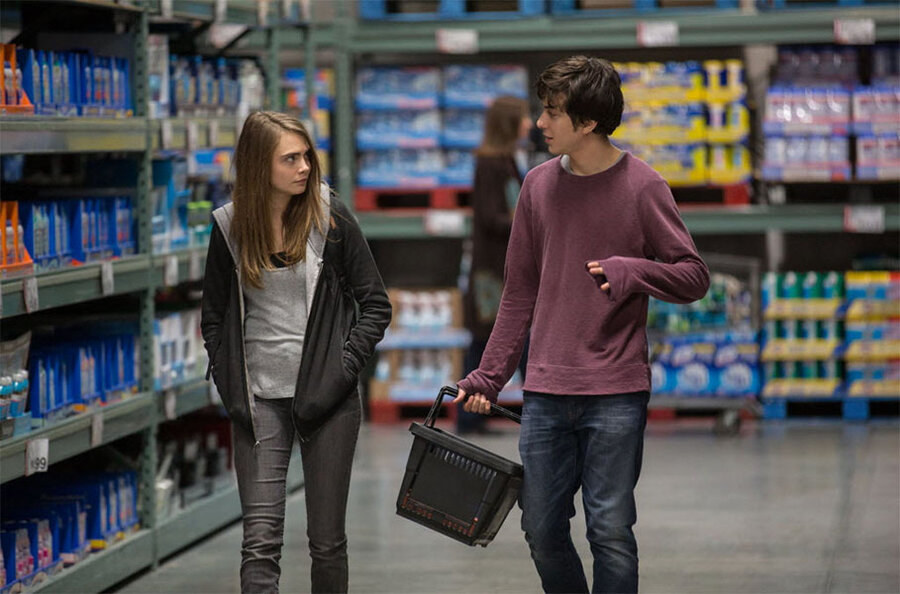How 'Paper Towns' is different from almost any other young adult movie
Loading...
The movie “Paper Towns,” which opens today, is the newest film based on a young adult novel by writer John Green to hit the big screen.
“Paper” stars Nat Wolff as Quentin, a high school student who is entranced by his neighbor Margo (Cara Delevingne). When Margo disappears, he convinces his friends to follow what he believes are clues Margo left him to tell him where she is.
A movie version of Mr. Green’s book “The Fault in Our Stars,” about two teenagers diagnosed with cancer, stars Shailene Woodley and Ansel Elgort and was released last year to critical acclaim and box office success.
And the studio behind Green obviously has confidence in his stories: the writer recently got a first-look deal with Fox 2000, which is part of 20th Century Fox. This means that the studio would pay Green to be able to be the first to have a crack at an adaptation of Green’s material.
Green was a force of nature in the young adult book world before “Fault” hit the screen – young adult bestseller lists are still dominated by his work and he hasn’t released a book since “Fault” in 2012. His success is also interesting in a “Harry Potter” and “Hunger Games” world. Green’s characters have no superpowers, no government they’re rising up against – they’re just trying to get through high school.
In the wake of the success of young adult dystopian and fantasy franchises, fewer studios are betting on tales of normal teens, too, making Green’s movies more of an anomaly. In high-profile releases, this summer’s teens on screen have included Scarlet Witch and Quicksilver in “Avengers: Age of Ultron,” two young adults with superpowers, and Casey Newton of “Tomorrowland,” who travels to a strange world. For big-budget movie releases over the next several months, protagonist Thomas and his friends will continue to fight against a mysterious authority in “Maze Runner: The Scorch Trials” and main character Zach will battle supernatural creatures in “Goosebumps.” English class is the last thing on the minds of most young adult characters in current movies.
One exception is this summer’s “Me and Earl and the Dying Girl,” which was released this June and is based on the book of the same name by Jesse Andrews. The book centers on teenager Greg, who tries to not draw attention to himself in high school, works on making movies with his friend Earl, and gets to know a peer who was diagnosed with cancer. However, the film is a more under-the-radar release than adaptations of Green’s books and has so far sold tickets accordingly.
Another exception is the teen comedy “The DUFF.” The movie, which was released this past February, did okay at the box office but wasn’t well-received by critics.
But if there’s one thing Hollywood loves, it’s trends. If movies based on Green’s books continue to do well – for example, if “Paper” matches the success of “Fault” – more reality-based movies about teens could be on the way.








